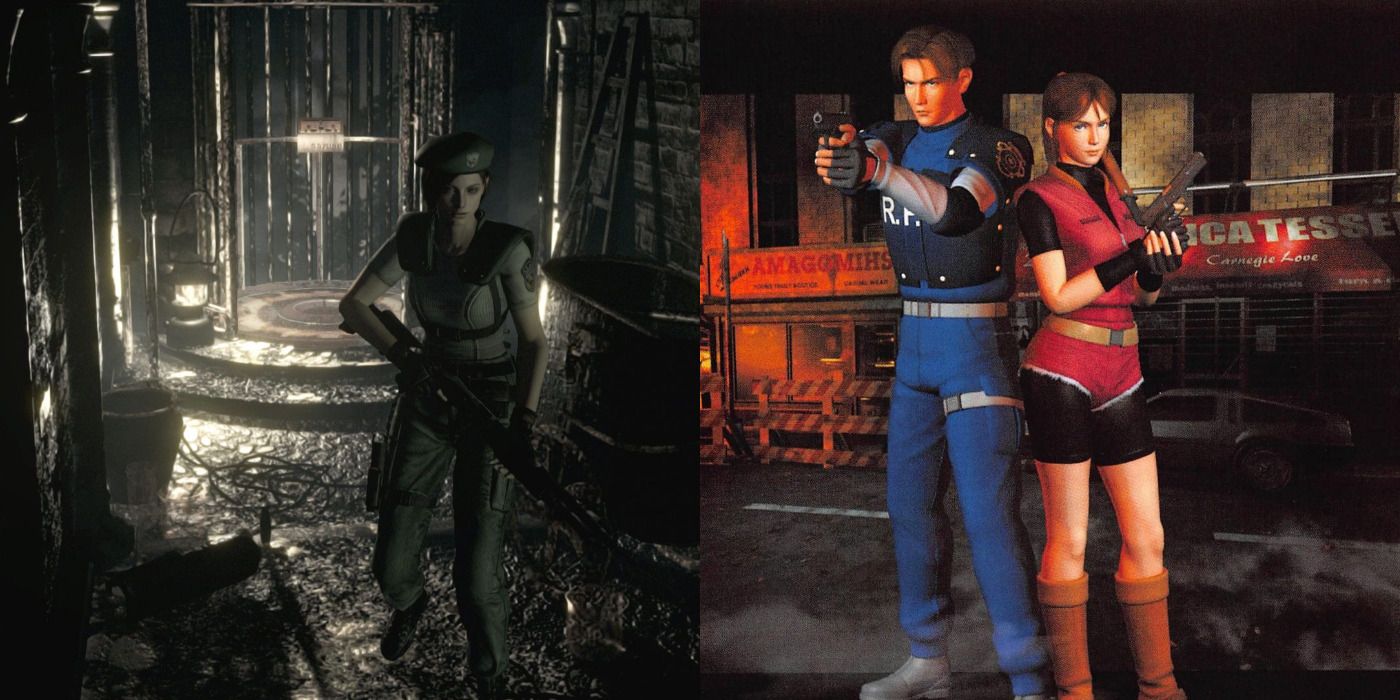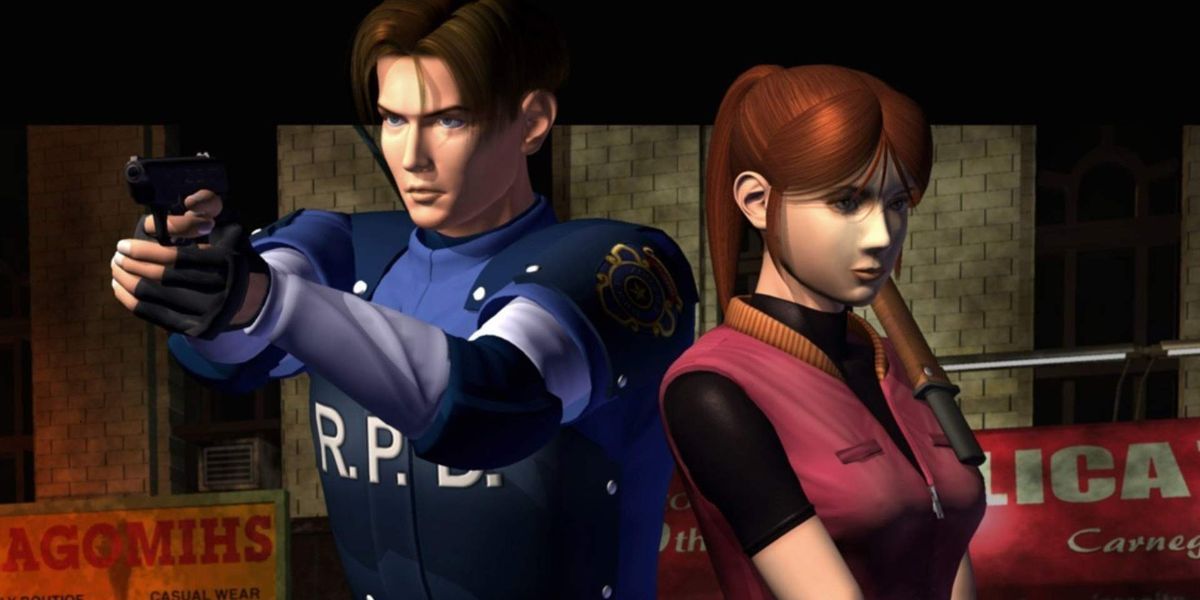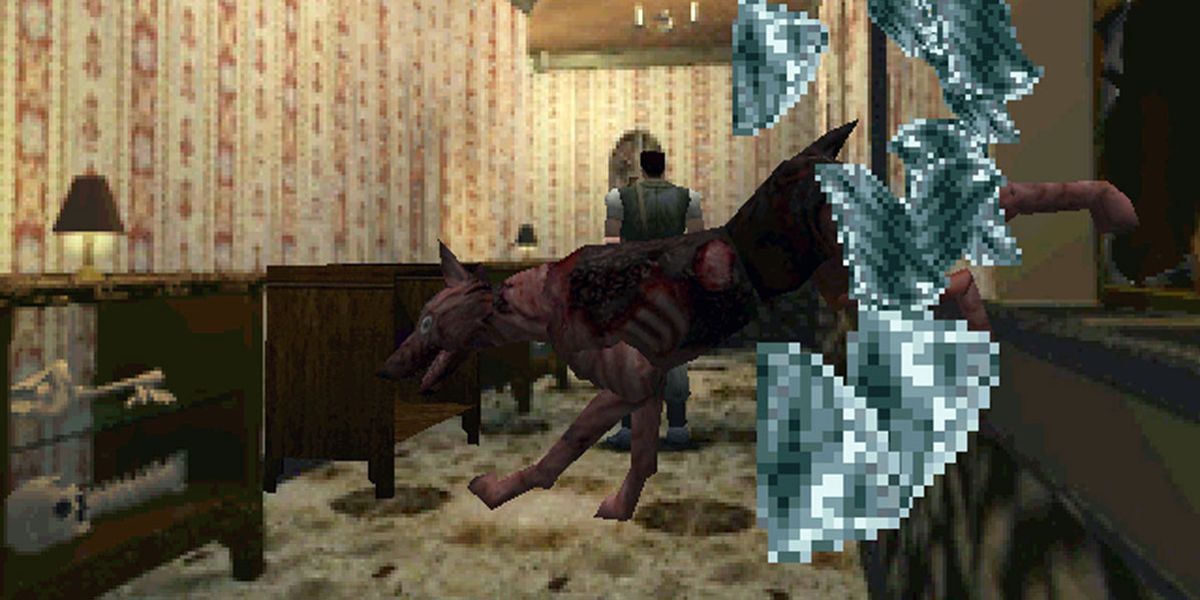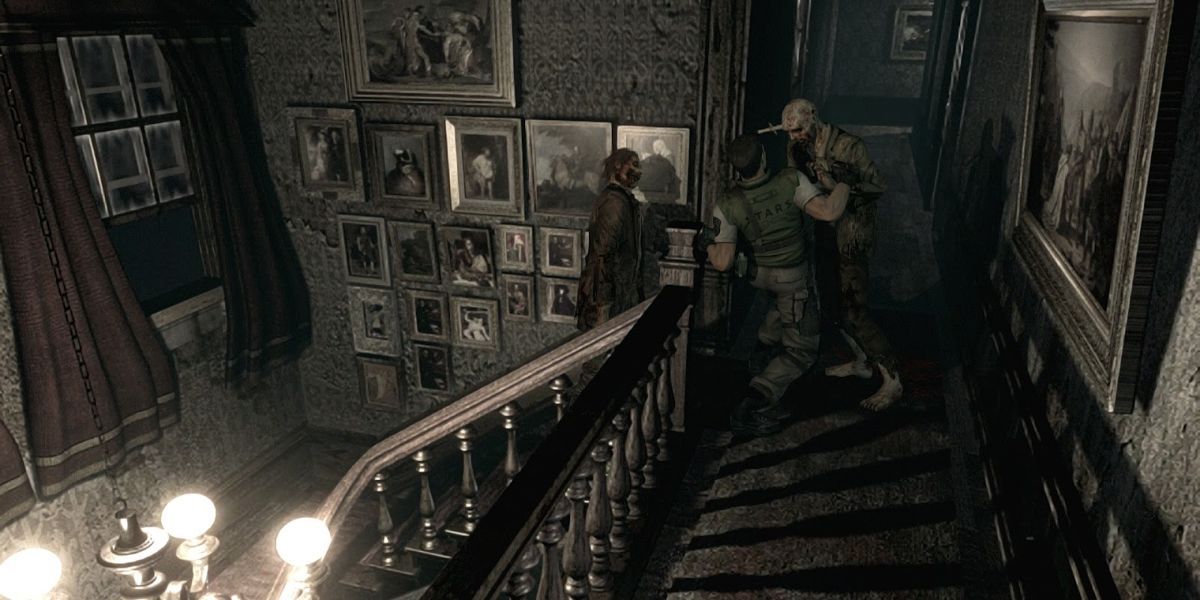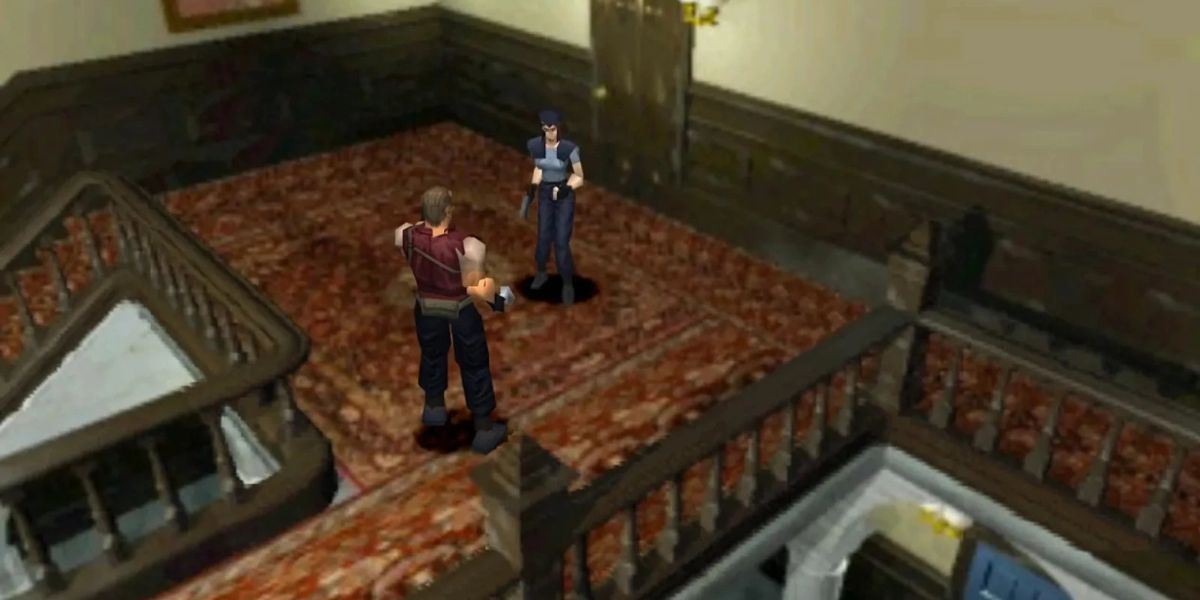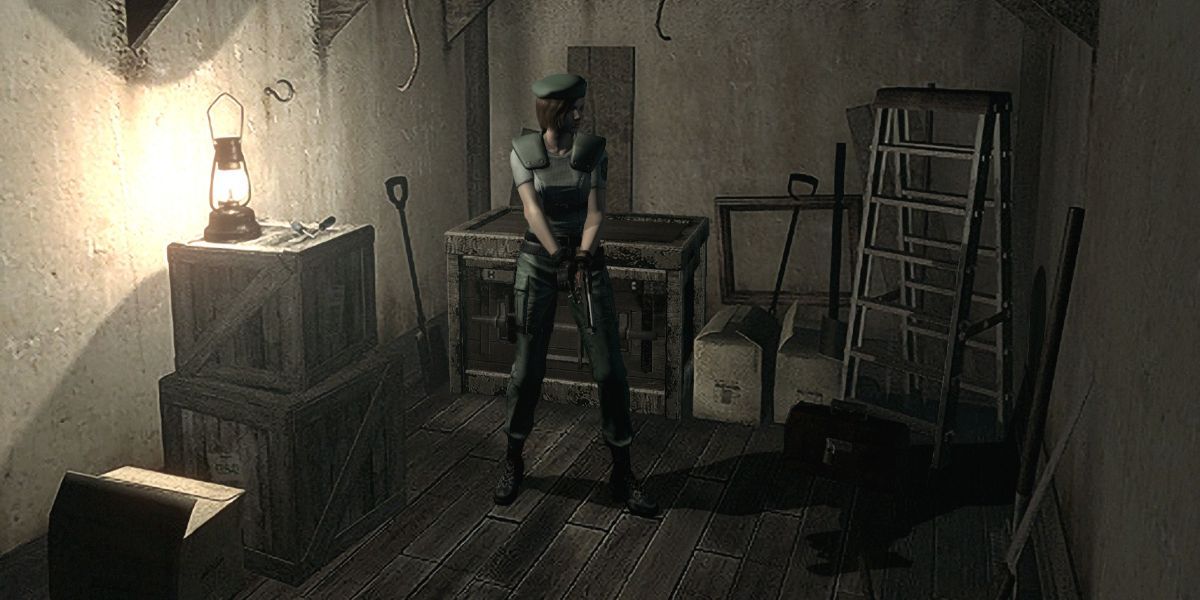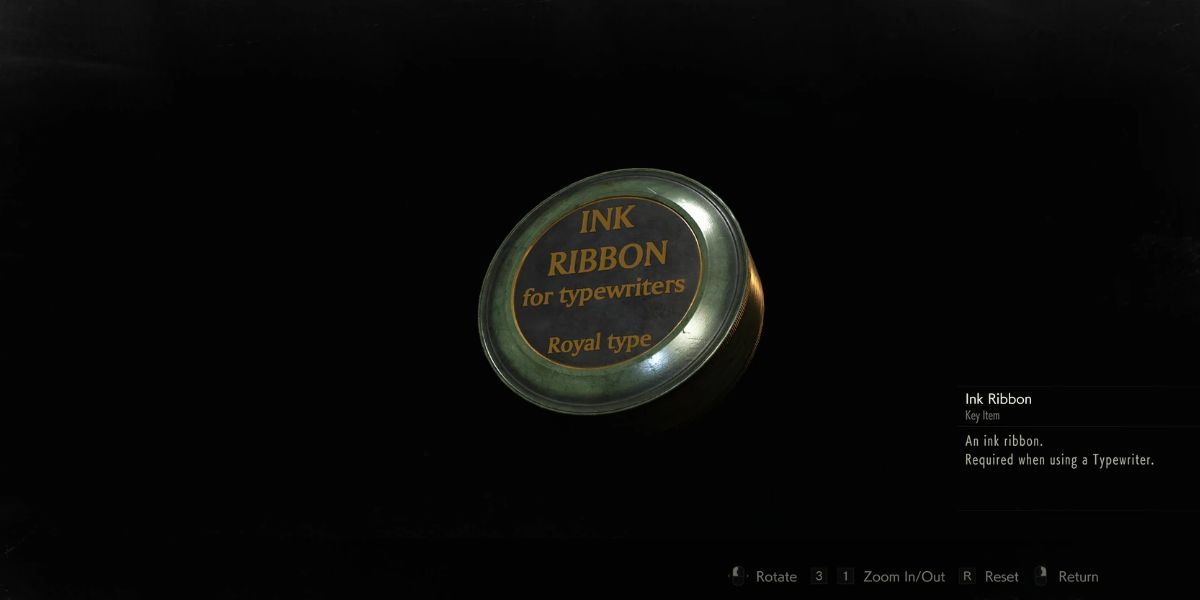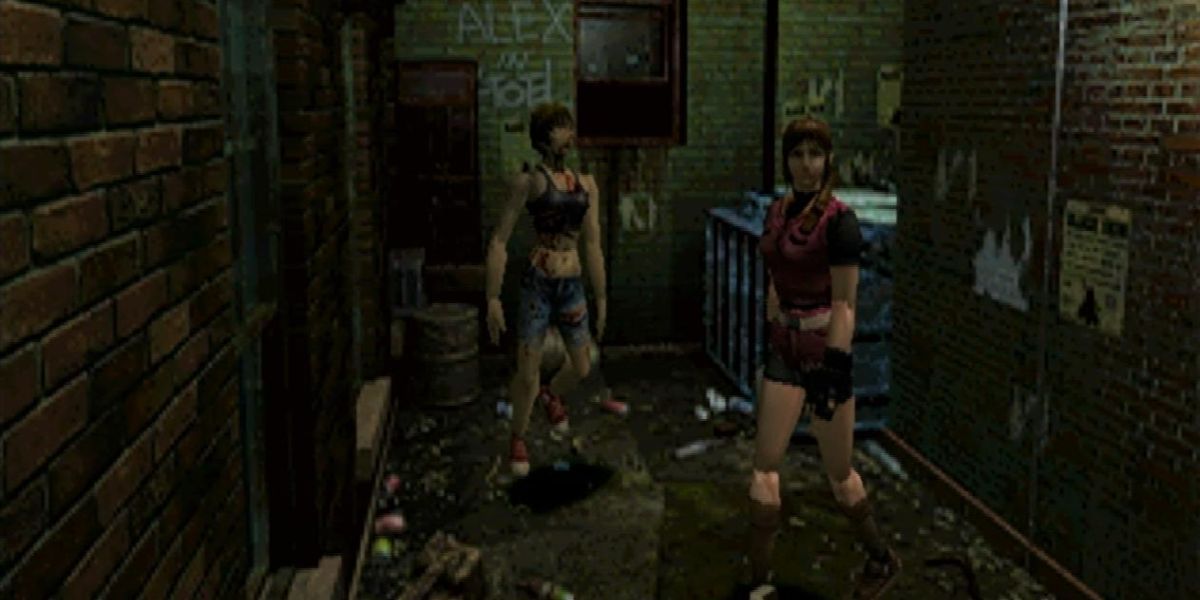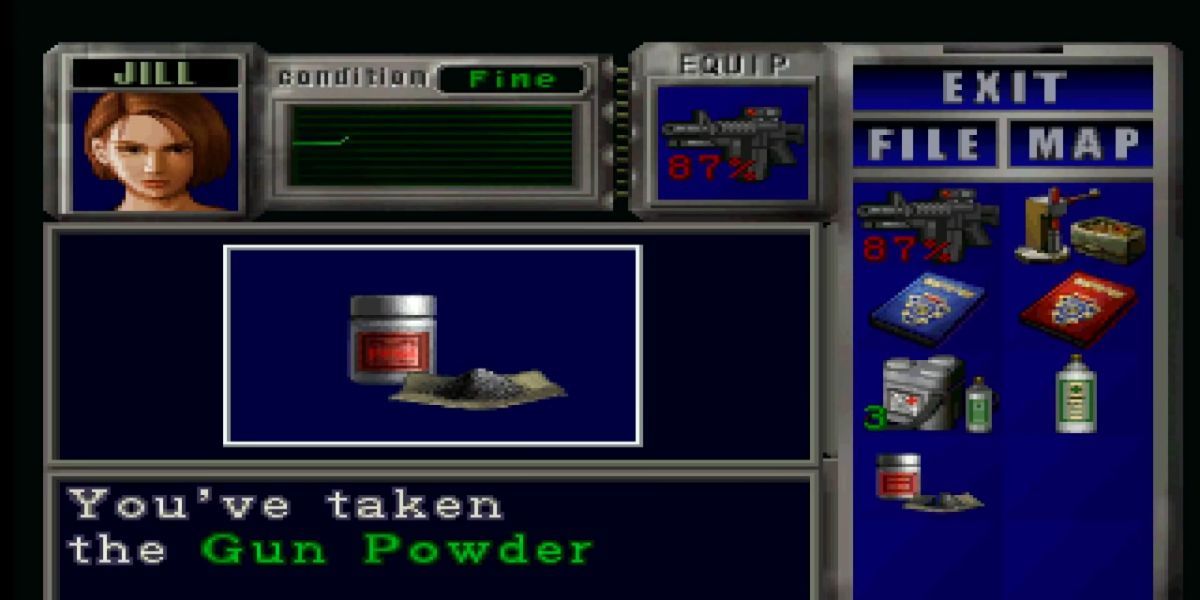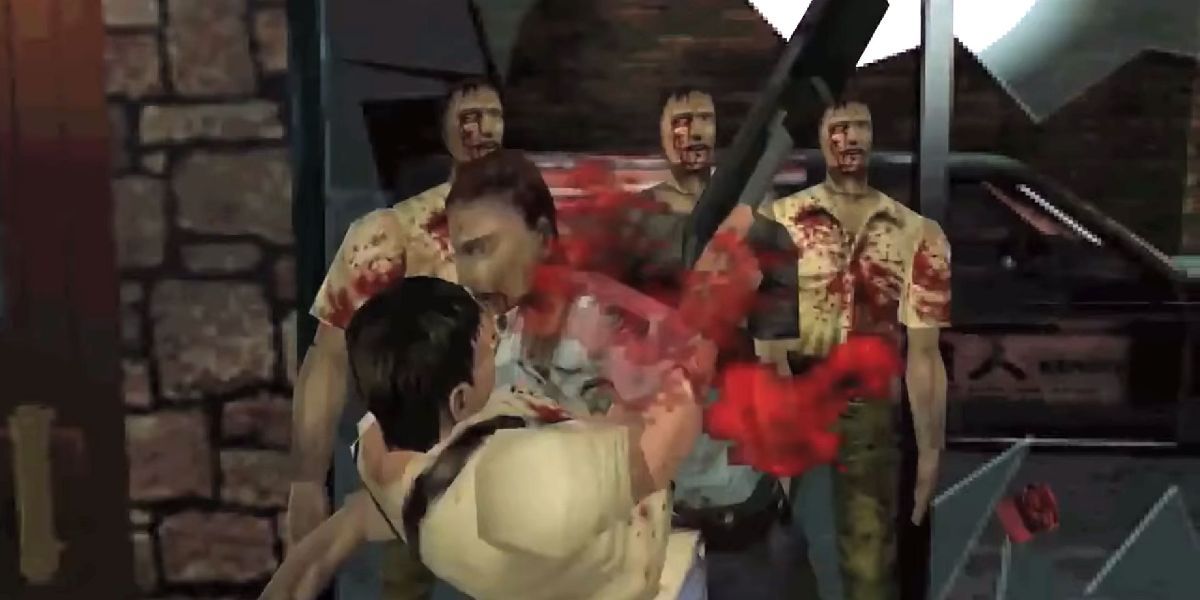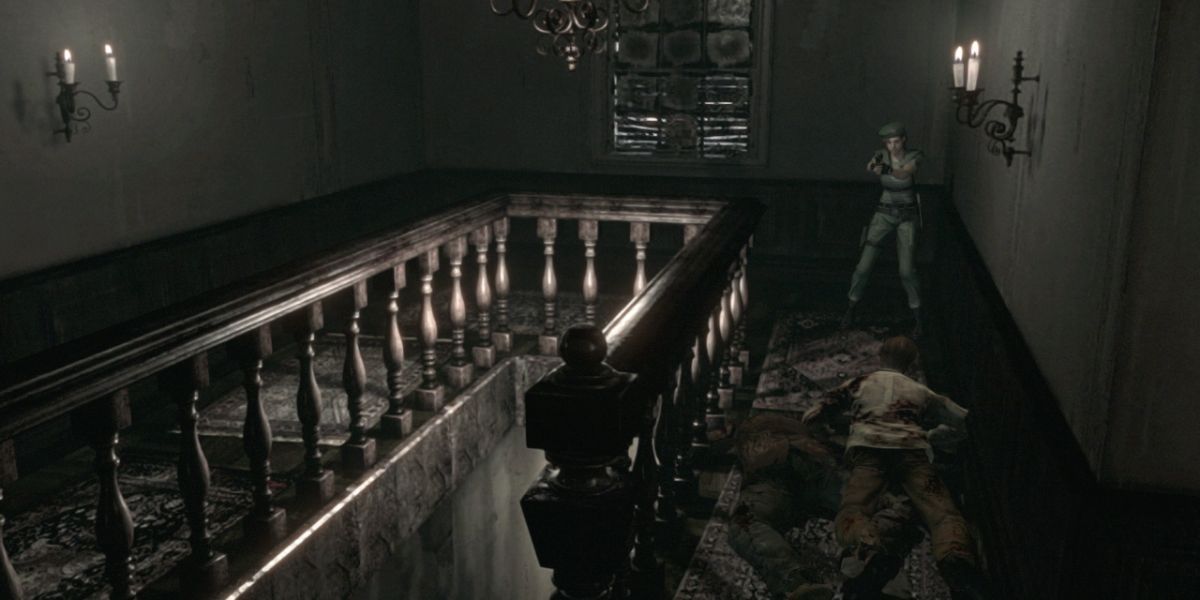The Resident Evil franchise has been around for a while—since 1996 to be precise—and the series has undergone numerous changes regarding the ways the developers approach each game. Some are over-the-shoulder third-person shooters, some are first-person horror experiences, and yet others are fixed-camera games, the style that was used for nearly every mainline Resident Evil title before Resident Evil 4.
The fixed camera games denied the player many things that have become standard in the modern video game industry, namely control over the camera and unlimited saves, opting instead to keep the camera fixed in place at a specific angle, only changing from room to room. While these design choices might seem antiquated at first glance, they're actually an important part of what made the early Resident Evil games so great, and what makes them worth checking out today.
Legacy
The Resident Evil games are credited for essentially inventing the entirety of what gamers now know as the survival horror genre—that sort of game that sets out not only to scare the player but also to challenge their strategic thinking and survival skills. That credit is accurate, as well; many of the design elements that have become tropes for the genre can trace their origins to Resident Evil.
Therefore, Resident Evil is a must-play for anybody with even a passing interest in horror games, and the earlier titles in the series stand out as absolutely essential entries in the genre, as well. As a part of gaming history, and as excellent games on their own terms, as well, the early Resident Evil titles are absolutely still worth checking out.
Scares
There are several advantages that fixed-camera systems have when it comes to horror games, but one of the most important ones is the ways in which a fixed camera can enhance and set up scares. In a more modern first or third-person experience, the developers don't have a guarantee as to where the player will have the camera pointed at a certain area, meaning that they might miss certain scares.
Fixed cameras don't have that disadvantage because the developers have total control over what the player will be seeing in each room. This is part of the reason why certain jumpscares, such as the zombies reaching into the Police Station hallway in Resident Evil, are so iconic; the camera can jump to startle the player at just the right time.
Aesthetics
Many of the classic Resident Evil titles are graphically dated by today's standards—save for 2002's Resident Evil, which is still extremely impressive—due to the limitations of the PlayStation's hardware. The textures and models aren't quite as high-fidelity as those that would be seen in a AAA release today, but that does not mean that these games are ugly.
Far from it, in fact. Despite the graphical limitations of the time, the work of the art team at Capcom comes through brilliantly even though the polygon count isn't quite up to snuff. The environments in the first three Resident Evil games are stuffed with character, with each instilling a distinct and memorable mood in the player.
Camp Factor
This isn't necessarily unique to the fixed-camera games, as many of the over-the-shoulder Resident Evil titles have a fair helping of goofy charm as well, but something about the PlayStation-era voice acting on display in earlier RE titles gives the games a goofy B-movie charm that makes them instantly endearing.
Classic lines like "you were almost a Jill sandwich" or "Ada! Wait!" confer a cheesiness to the experience that is sure to remind the player of their favorite campy 80s horror movie. That's not to say that these games can't still be scary, though, it's just that the camp factor adds a certain depth to the experience.
Music
Instrumental to the ambiance that is so pervasive in fixed-camera Resident Evils is are the soundtracks. The save room theme in each game is sure to be burned into the player's brain forever because they perfectly convey that, while things might be safe for now, it's important not to get too comfortable.
Music also does an excellent job of setting a creepy tone to each area that the player has to work their way through. Some areas are foreboding and spooky, while others are tense and suggest something might be lying in wait, and others still are calm, but with sinister undertones.
The Save System
In the classic fixed-camera Resident Evil games, players were required to expend a limited resource, ink ribbons, to save their progress at a typewriter. Although ink ribbons are far from the scarcest resource in many of these games, they are distressingly finite, which forces the player to think strategically about when and where they need to save their progress.
That might seem intimidating at first, but it adds an essential layer to the survival mechanics and strategy that makes these games so engaging. How far can the player make it without saving? Is it worth it to expend a save now to be safe? Is it worth taking ink ribbons if inventory space might be better used by weapons? The save system prompts the player to ask themselves these questions, and more, making the games that much more tense.
Controls
One of the biggest obstacles that newcomers encounter when diving into the classic Resident Evils games is the cumbersome so-called "tank controls" which are at first difficult to navigate and put the player at a distinct disadvantage against even the most slow-moving of enemies.
These controls are typically written off as dated relics of their time that have no place in the modern era. However, they are an important component of the tension and horror the series is known for. The player is at a mobility disadvantage, meaning that every encounter is dangerous. Furthermore, the unfamiliar control scheme introduces as a learning curve to movement, revealing a surprisingly high mechanical skill ceiling.
Survival Elements
While the more action-oriented Resident Evil games are excellent for their own reasons, they don't quite deliver in the hardcore survival game department in the same way that the fixed-camera classics do. Earlier entries in the franchise are credited with pioneering the survival horror genre, and, when revisiting those games, it's not hard to see why.
From dramatically limited inventory space, limited saves, enemies that could sponge up loads of damage, and extremely scarce resources, these titles force the player to think hard about which items they absolutely need to bring and how to best use them in order to stay alive.
Challenge
Fixed-camera Resident Evil games are challenging by design; the unfamiliar control scheme and lack of a free camera put the player at a notable disadvantage compared to their adversaries, and the games have a habit of flinging the player into an extremely dangerous situation before they've had a chance to get a handle on how to move around their environment.
On top of that, the survival mechanics can be punishing, particularly in harder titles like 2002's Resident Evil remake. Ammunition is scarce, killing enemies is often not worth it as the player character can die in just a few hits, and healing items are often not a luxury that can be afforded.
Atmosphere
One of the most praised elements of the fixed-camera Resident Evil entries is their atmosphere, particularly when it comes to the critically-lauded 2002 remake of the original Resident Evil, which seems to perfectly capture the spooky, ominous vibe of being trapped in an unfamiliar mansion full of things that want to eat people.
The camera plays a big part in making this all work as intended. In horror movies, techniques like dutch angles are used to build tension, or the director might place the camera outside of a house looking in to make it seem as though the characters are being watched. Resident Evil adopts this practice perfectly in a video game context, making the games tense despite their graphical limitations.

